Beetles, forest correspondents
2005/04/01 Lapaza Rodriguez, Jokin | Mendez Manuel, Manuel | Salaberria de Miguel, Eneko Iturria: Elhuyar aldizkaria
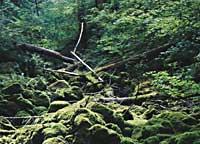
Forests play a large number of beneficial roles: preserving biodiversity, providing wood and forest products, avoiding erosion, regulating the hydrological cycle, retaining carbon, curbing climate change and offering places where everyone can enjoy. Furthermore, forests are an important part of the cultural landscape of our society and therefore a heritage to be preserved.
On the other hand, it has always been an important source of income for obtaining rural land, fuels, building materials and tools and forest products (fruits and fungi). The current forests are a consequence of the production and consumption habits of the population so far, whose management has had as sole objective to obtain the maximum economic performance, so the richness of these ecosystems is decreasing.
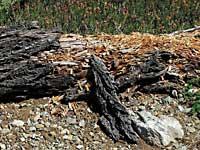
To address the worrying situation of European forests, the concept of sustainable management has been strengthening in recent times. In defining this, it may be appropriate for the inter-ministerial conference for the protection of European forests (Helsinki Convention, 1993): “Biodiversity is the use and conservation of forest land with fertility capacity, regeneration capacity, vitality and local supply capacity of ecological, social and economic functions in the present and in the future, without prejudice to the surrounding ecosystems.”
According to the above, one of the objectives of sustainable management is to maintain, conserve and increase, as far as possible, the biodiversity of forest ecosystems.
Structured forest, healthy forest
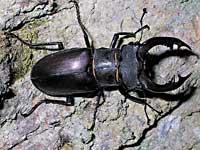
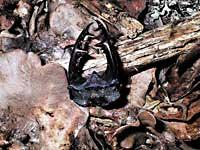
The structure of the forests has a great importance in the living beings that inhabit them, since the forest is the game board to find a suitable place of residence for them. As for the tree, as it is more mature, it offers more ecological corners, perforations, skin folds... It is said that this ecosystem is well structured when it has trees of different ages and levels of development and conserves enough dead wood.
90% of the biomass in a forest is wood. Dead and/or sick logs play a fundamental role in the development of the forest in different areas. Wood that no longer has live tissue, that is, without xylem or viable phloem, is considered dead and its importance is mainly based on three main functions. On the one hand, it enriches the soil by providing it with the organic matter it needs. On the other hand, it offers different living beings an ideal habitat so that they can settle there or protect themselves from adverse weather conditions, among others. Finally, since many organisms feed on dead wood (either by directly eating it – xylophagi – or by eating fungi or bacteria that grow on it), the forage chain is an essential element.
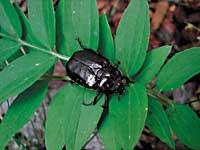
Thus, in one way or another, many animals depend on dead wood; among them, the most abundant are saproxylic insects, mainly beetles and flies.
Saproxylic are species that depend, at least in part on their life cycle, on dead wood, trees in danger of death or dead (standing or on land), fungi in wood or other saproxylic organisms.
Since the group of Saprop coleoptera is so broad and diverse, the functions it performs inside the forest are of vital importance. The function of these beetles can be divided into four axes in the dynamics of the forest ecosystem: to facilitate the pollination of some species, to create habitats suitable for other organisms (since the nest and the holes built by the beetles are used by certain birds and small mammals), to be the basis of the forage chain of several species and to increase the speed of the process of decomposition of the wood.
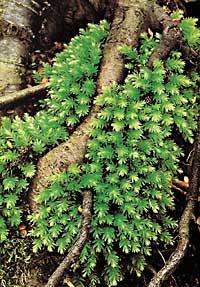
Although the decay process of wood is continuous, three phases can generally be distinguished. The duration of each of them is very variable depending on the tree species, the climate or the microclimate, the implantation of the wood and the influence of the saproxyllic, among others. In a first phase, in the colonization, appear beetles with initial digestion capacity of the wood. In a second phase, in decomposition, other species of beetle appear that benefit from the activity of beetles during colonization.
In general, all saproxic organisms present in this second phase depend on the saproxylic beetles in charge of colonization, the only animals with special enzymes for the first digestion of wood. Finally, in the third phase called humification, bacteria and microfungi replace the saproxylic beetles of great importance in the two previous phases.
Saprop coleoptera: indicators of forest structure
In order for a species to be bio-indicator, in addition to being intimately linked to an ecosystem, it must provide us with a measure of ecological quality of the ecosystem itself. This way you can know the current situation and track the ecosystem.
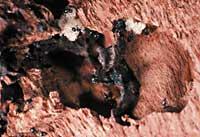
Traditionally animals such as mammals have been used as bioindicators for their ‘closeness’, but in recent years new lines of work are being promoted based on invertebrates, mainly insects. These also have numerous advantages over vertebrates:
- They are more abundant in number. Facilitate the collection of samples that reflect the status of populations. Few insect species perform high-level migrations, so population fluctuations are due to local changes. With a maximum life cycle of one year, populations are very sensitive to both low productivity years and habitat loss. However, some species may remain in larval state for a long time to cope with lack of food. Since a species can present different phases throughout its life cycle, it is common for each species to have different needs (habitats, pastures, etc. ). Some species have a high degree of specialization (stenotic species).
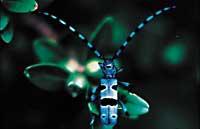
Saprop coleoptera, in addition to meeting all these characteristics, are indicators of the availability of dead wood in its decaying phases. At the same time, dead wood is a good indicator of well-structured forests, so the capacity of bioindicators of these beetles is evident.
In recent years, numerous studies have been carried out in several European countries based on saproxylic coleoptera. In countries such as Sweden, Italy, the United Kingdom, Latvia and France, the results obtained from all these research have allowed monitoring of the state of forests.
These works have highlighted the serious situation of many species. Consequently, Directive 92/43/EEC on the conservation of natural habitats and wild fauna and flora was signed in Brussels on 21 May 1992. It mentions six species of threatened saproxylic coleoptera: Rosalia alpina (Linnaeus, 1758), Cerambyx pig ssp. mirbecki (Luke, 1842), Lucanus cervus (L., 1767), Limoniscus violaceus (Müller, 1821), Osmoderma eremita (Scopoli, 1763) and Cucujus cinnaberinus (Scopoli, 1774). Although the situation of other saproxylic species with the same requirements is unknown, it may be thought that they will be similarly threatened.
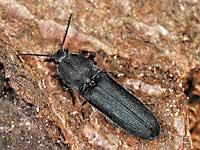
In Euskal Herria, as in other areas, we follow the most advanced countries in Europe. Thus, as the Basque Government points out in its Environmental Framework Programme (2002-2006), there is a need to inventory and catalogue invertebrates. Among the research carried out are those of the Department of Entomology of the Society of Sciences Aranzadi.
Dead wood: no sense of fear
The basis for the main reasons for the removal of dead wood from forests is not entirely a sign of reality. For example, even if the wood is fuel to spread fires, it would be necessary to control the real agents to avoid fires, that is, the criminals who are behind economic and social interests. On the other hand, to cope with the risk of falling old trees or suspended branches on someone, often these structures are cut and cleaned. A clear example of this is what happened in the mature forests of Great Britain, where the situation of saproxylic fauna is very serious.
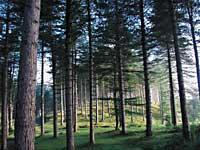
The Council of Europe recommends limiting access to forests rich in saproxylic fauna in this regard.
Few saproxylic organisms are able to attack healthy trees; in this sense, the damage to pests is not so worrying.
The European Council wants forest managers to become aware of the ecological importance of dead wood and not consider it a source of disease or pests.
Finally, the ‘cleaning’ of forests is also done for aesthetic reasons. When have we not heard of logs and branches of earth, which are just “dirt”? In short, the argument of aesthetics depends on the personal point of view and education has much to say when it comes to setting the ideas of society.
Saprollic coleoptera sampling techniques More direct technique Parts of logs, branches, roots, etc. dead are collected at random and after pointing out some parameters, such as location and orientation, they move to the laboratory. Once in the laboratory, the samples are completely peeled on a light-colored table to see the fallen individuals. They are collected according to the size of the organisms, either directly or through different tools. The wood then decreases to keep collecting insects. The wood very decomposed and in humification phase can be crushed by freehand and collect the specimens in sight. The wooden crumbs are then collected and inserted into the Berlesse funnel. The final selection is made through a network with holes of 2 mm. Malaise Traps Since the exposed method destroys the microhabitat of the species under study, in the last decade other sampling methods have been developed, such as Malaise traps. These traps collect mostly flying insects attracted by light. This method has two main disadvantages: on the one hand, it only serves for the monitoring of adult insects and not for the larva. On the other hand, by encompassing all kinds of flying insects, like many diptera and hymenoptera, it can be concluded that the trap is unselective. |
BIBLIOGRAPHY
- Azkarate, A. Conservation of the flora and fauna of Gipuzkoa. Provincial Council of Gipuzkoa, Department of Agriculture and Natural Spaces. 1995. Collins, N. M. and Wells, S. M. “Invertebrated in need of special protection in Europe” Nature and Environment Ser., n> 35, Council of Europe, Strasburg. 1987. Garner, W. And. and Harvey, J. - American Chemical Society, Washington. Jr. (eds. ). 1984. Speight, M. C. D. Les invertébrés saproxyliques et leur protection. Council of Europe. 1989. Swift, M. J. “The ecology of wood descomposition” Sci. Prog. Oxf. 64, 175-99. 1977.



